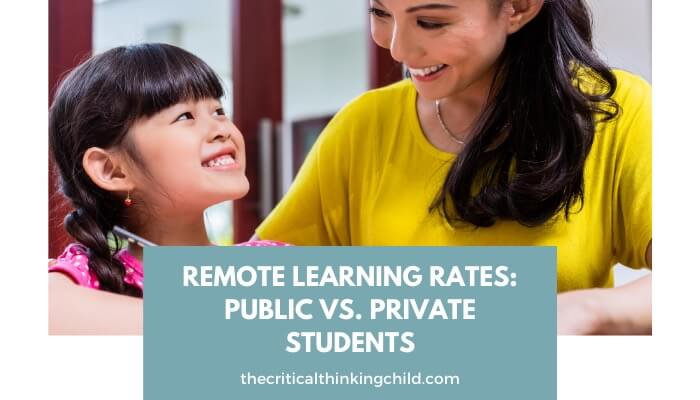With just months of remote learning under our belts, the assumption has arisen that private homeschooling students are getting a better remote learning experience than public homeschooling students. Is this true? If so, what can we do to bridge the gap?
Let’s dive into what we know so far.
The Facts about Private Homeschooling and Public Homeschooling
According to a New York Times article and a Seattle based think tank called The Center on Reinventing Public Education, of 100 public school districts and charter networks studied across the country, only 22 required real-time (synchronous) teaching in the spring. Of those 22, just 10 districts required live teaching in all grades. The study also found that the three largest school districts in the nation—New York City, Los Angeles, and Chicago—did not require that instructors provide live instruction.
While private schools weren’t studied as thoroughly, many parents reported anecdotally that their private school students received hours of live instruction each day with lots of support from the teacher.
It’s important to remember that this data is from the spring semester, when teachers and administrators were scrambling to get students tech devices, internet hot spots, and in many cases, food to eat. With more time to plan for the upcoming semester, you can expect remote learning to go more smoothly across the board.
What Does a Good Remote Learning Experience Look Like?
It can be hard to wrap our minds around the new normal of remote learning, but it’s important to take a step back and understand that remote education in both private and public homeschooling scenarios isn’t going to look exactly the way schooling did prior to the pandemic.
Here are some items you can look for to evaluate the quality of your child’s remote learning program no matter where they attend school normally:
Instructional time
How much time does your child spend receiving instruction each day? This time can be live with the teacher (synchronous) or a pre-recorded lesson (asynchronous). In elementary schools, a reasonable amount of time to expect is around three hours each day. This doesn’t include independent reading, skills practice, or homework time.
How you can help: If your child receives significantly less than three hours of instruction a day, check out video sites like Khan Academy to supplement their school lessons.
User friendly experience
Especially for elementary school children, the accessibility of the online platform being used is important. Does your child have to click endless links just to connect to their daily lesson, or is the same Zoom link each day? What does assignment submission look like? Can your child take a picture of their work and post it, or are there difficult downloads and assignments to edit?
How you can help: If you find that your school or district’s platform is difficult to use, ask if there are alternatives to procuring and submitting assignments and accessing lessons.
Access to supports
Does your child’s teacher offer office hours or have some classroom time each week designated to answering questions from students and parents? Is there sufficient help available if your child struggles with technology or logging into accounts?
How you can help: If you’re finding that you or your child have a lot of unanswered questions, ask the teacher or the principal to help by providing a weekly question and answer session; this might be a need for other parents as well!
Social and emotional learning
Does the school address your child’s need for socialization with peers? Many schools offer something like a “weekly mingle” where all the students in a grade level have a Zoom meeting purely to socialize. You might also check in with the administration and see if there are counselors available to help students who are really struggling?
How you can help: Make sure you check your school’s website to see what has been put in place to support the whole child. If your schedule and tech skills allow, offer to support by facilitating a social Zoom session for your child’s class.
The Quality of Homeschooling for Private and Public School Students
The simple truth is that homeschooling will vary significantly during the upcoming school year, depending not just on the systems put in place by private and public schools, but also on the home learning environment, individual teachers, and your student’s learning style.
Homeschooling success requires adaptability and the ability to advocate for your student when you notice things that can be improved. After all, this is a learning experience for everyone!



